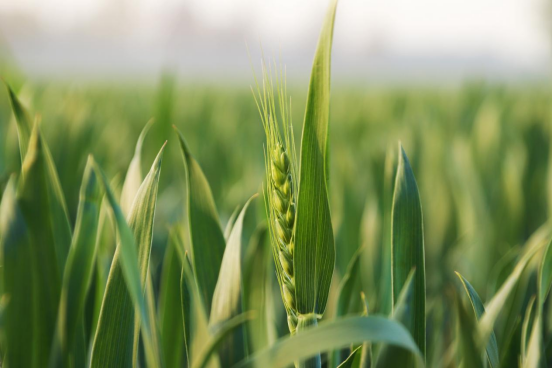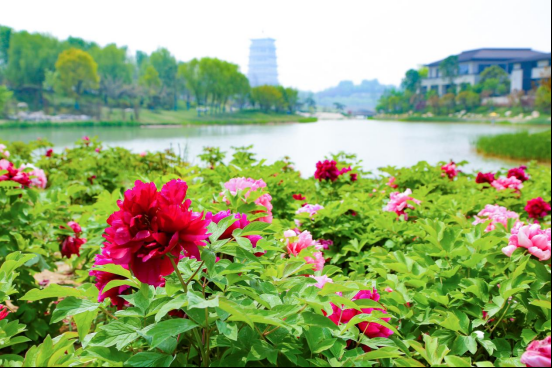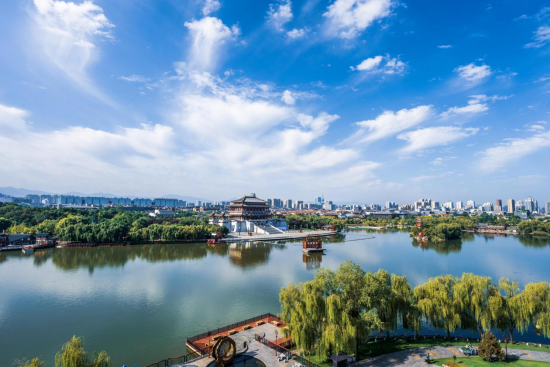source:CCTV.com editor:Zhang Wenni
Editor's note: the twenty-four solar terms, as a supplementary calendar for guiding farming in ancient China, are the fruits of the long-term experience and wisdom of the working people in China. This broad and profound scientific and cultural system is one of the quintessence and representatives of the excellent traditional Chinese culture. In order to further carry forward traditional culture, enhance the majority of Internet users' understanding and interest in traditional culture, and further strengthen their cultural self-confidence, a series of themed activities of Xi'an "Online China Festival" and "Xi'an in the solar terms" sponsored by the Xi'an Municipal Office of the CPC Xi'an Municipal Committee launched a series of cultural popular science articles to experience the charm of traditional culture and inherit the new trend of civilization of the times.

Today, we welcome the last solar term of spring-Grain Rain. Like the solar terms of rain, light full, light snow and heavy snow, Grain Rain is also a solar term that reflects the phenomenon of precipitation, and is the reflection of ancient farming culture on festivals. The arrival of Grain Rain means that spring will end and summer will come.

The ancient book "Qunfang spectrum" says: "Grain Rain is born out of the rain.". The name Grain Rain comes from the meaning of "rain produces hundreds of valleys". According to the collection of the seventy-two seasons of the lunar calendar, "in the middle of March, after the rain, the earth and paste pulsate, and now it rains its valley on the water... Cover the valley at this time to sow, from top to bottom." it means that in the valley rain season, the rain moistens the earth, and the grains thrive, showing a prosperous scene.
"The spring dawns in the valley rain, the mountains and rivers are green, the leaves are singing, Dai Sheng is singing, and the water is flowing with duckweeds.". Taking five days as a period, the ancients divided Grain Rain into three periods: "the first period is when the duckweed begins to grow, the second period is when the dove blows its feathers, and the third period is when Dai Sheng falls on the mulberry." when Grain Rain arrives, with the temperature rising, the duckweeds on the water quietly spread. The cuckoo's cries come and go, reminding farmers to sow seeds in time and not to miss the farming season. After Gu Yu, Dai shengniao began to build nests on mulberry branches and reminded people that it was time to collect mulberry and raise silkworms. The three seasons of Valley rain are just a reflection of the late spring.

Grain Rain offered a sacrifice to Cangjie, with a long history of thousands of years. Grain Rain solar term is also related to the ancient story of Cangjie's word creation. It is said that Cangjie, the historian of the Yellow Emperor, created Chinese characters by looking up at the sun, the moon and the stars, overlooking the traces of birds, animals and insects in the mountains and rivers. God was moved and rained millet rain on him. When the Yellow Emperor learned of it, he designated the day when it rained millet as Grain Rain. "Huainan Zi" records: "the former Cangjie wrote a book, while the rain millet, ghost night cry
Throughout the ages, the story of Cangjie's creation of characters has been passed down by word of mouth. Every year, during the valley rain season, the incense in front of Cangjie temple in Baishui County, Shaanxi Province is filled with incense. People from all over the world worship Cangjie, the "ancestor of characters". The "Cangjie Temple Monument" now stored in Xi'an stele forest museum, which was inscribed in the fifth year of Yanxi's reign in the Eastern Han Dynasty (162), is to commemorate Cangjie. On the surface of the monument, words describing Cangjie's merits such as "Cangjie's natural virtue" can be vaguely identified. In addition to the "Cangjie Temple Monument", the "Cangjie lettering platform" located in Guodu, Chang'an District and the "shangrenyuan" located in cangyu village, Zhouzhi County are all related to the legend of Cangjie lettering. In 2010, the United Nations designated Grain Rain day as the "Chinese Language Day" to commemorate the contribution of Cangjie, the "ancestor of Chinese characters", to the creation of Chinese characters.
In addition to offering sacrifices to Cangjie, the Grain Rain solar term also has folk customs such as appreciating peonies, drinking Grain Rain tea, and eating spring. Before and after Gu Yu is an important period for peony to bloom, so peony is known as "Gu Yu flower". There is a folk proverb, "Gu Yu looks at peonies in Three Dynasties". Grain Rain tea is spring tea harvested in Grain Rain season, also known as erhun tea. It is said that the tea on Grain Rain day will clear the fire and brighten the eyes. Zheng Banqiao said in the seven character poem, "it's just the Qingming Festival with Grain Rain. A cup of tea is sitting there." tea tasting and meeting friends show the elegance of literati. In the book of tea in the Ming Dynasty, it was said: "the Qingming Festival is too early, the summer is too late, and the time is moderate before and after Gu Yu."

As the saying goes, "eat Chinese toon sprouts on March 8". In the rainy season, Chinese toon is the most tender and delicious. It is also a seasonal delicacy on the table in the north. On the dining table of Xi'an people, there is also an essential food, which is "Maifan". People eat vegetables with dry flour and good steaming. They are delicious and healthy. Spring vegetables such as elm, alfalfa, Sophora japonica, shepherd's purse, amaranth, beans and so on can become the protagonists of Maifan, which is really a fresh eye. According to Feng Yizhuan in the later Han Dynasty, "Guangwu started to burn clothes on the stove, and then changed his ways to eat rice and dodder his shoulders." one of Luyou's plays on the village house wrote: "the sound of the warbler is beautiful in the daytime, and the rice of the music family is fragrant at the age."
"Before the rain in the Spring Valley, pick fragrant smoke with your hands.". Grain Rain not only symbolizes the replacement of nature, but also carries people's expectations for life. Since ancient times, scholars and scholars have often used Gu Yu to write poems. "When I sleep in spring, I don't know the dawn. I hear birds everywhere. I know how many flowers fall when the wind and rain come at night." describes the scenery in the valley rain season. "Listening to the music and cranes while the tea smoke is still blowing, and the people weeding wheat in the light cage of the valley rain" shows the beauty of spring ploughing and spring scenery. "The red and purple makeup forest is full of green pools, and the gossamer catkins depend on each other. When the valley rain clears up, the shooting ducks are short and the moss is smooth, and the thrush sill is late. Spring returns again in a year." Huanxi sand, written by Qiu yuan of the Song Dynasty, just wants to tell you that you should cherish the spring and wait for hope.
The rain has come and the spring is waning. Time is fleeting, but beauty will continue. May you, who are chasing your dreams on the road of flowers, welcome the hot summer in a better state. Everything in the world is just right. Don't lose your time.